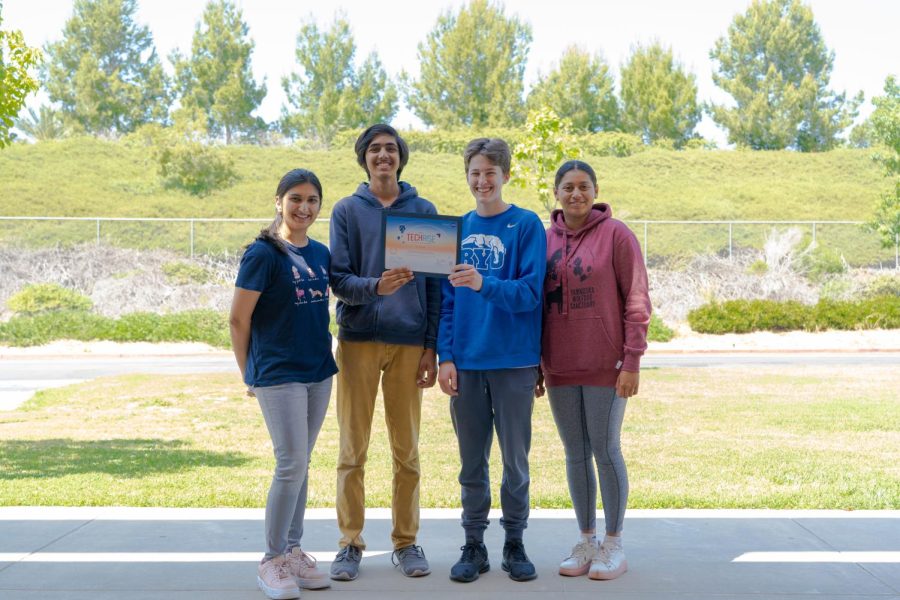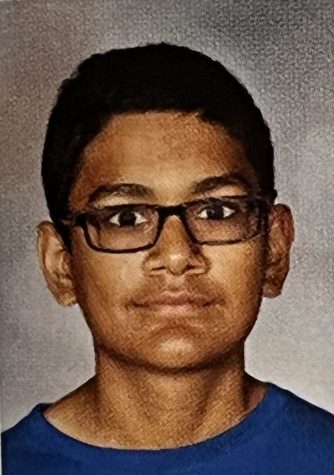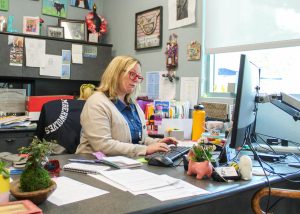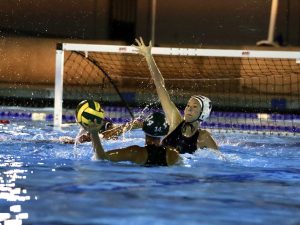Northwood students pave the way to space through NASA project
THE SKY IS NOT THE LIMIT: Sophomores Riya Gupta, Shrey Shah, Hunter Welch and Shreya Aithal proudly pose with their TechRise student challenge winners award certificate.
May 26, 2023
A Northwood student team, consisting of sophomores Riya Gupta, Hunter Welch, Shrey Shah and Shreya Aithal, was selected as one of 60 winners of the nationwide NASA TechRise student challenge for their Gallium Nitride transistor testing experiment.
On May 5, the team had an online showcase of their final product, an experiment designed to test the accuracy of two materials used as semiconductors, to Future Engineers employees and NASA engineers. The day after, they shipped out their experiment to be tested by Future Engineers.
“I was really interested in joining this because it allowed me to explore an area of science I’ve never tried before,” Aithal said. “Hunter has a background with electrical engineering, but I definitely don’t. Our mentors were awesome and taught us everything.”
The NASA TechRise competition, run by Future Engineers, allowed student groups to submit proposals of their project ideas in October 2022 and selected 60 groups to be funded for their experiment in January. This year, the competition’s theme required an experiment that could be tested in a high altitude balloon.
From January to May, the team spent roughly 70 hours on the project. They met weekly to build their electrical contraption with mentors Tyler Hurt, Claire Bengston and Bria Jacobs, who helped them write the code, mount the box and perfect the logistics.
Northwood teacher Gabrielle Camacho was their advisor, acting as the “team lead” and managing the administrative affairs.
“They’re so young, but the way they present themselves to the NASA experts, working together as a team to solve all the problems, is just incredible to watch,” Camacho said. “They’re growing so much in academia, outside of the classes.”
In early June, the team’s payload will go into the high altitude balloon, cruise for four hours at 70,000 feet and come back down with data.
They will then analyze their results and discover whether their hypothesis was corroborated or rejected.
Regardless of the results, the team sees the experiment as a worthwhile and valuable experience.
“My favorite part was seeing our growth,” Welch said. “One thing I learned is that you have to be in it entirely, give it your all. You want other people to be in it with you as well, and that’s what really makes a good team. We all wanted it.”



![AAAAAND ANOTHER THING: [CENSORED] [REDACTED] [BABY SCREAMING] [SIRENS] [SILENCE].](https://thehowleronline.org/wp-content/uploads/2025/06/lucy-1200x800.jpg)





















































